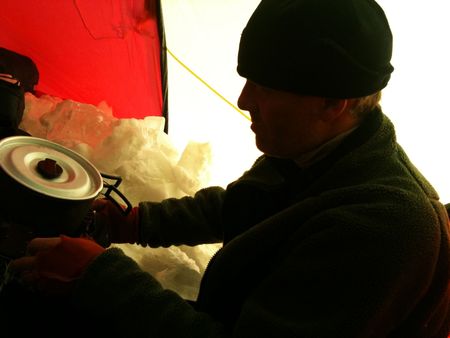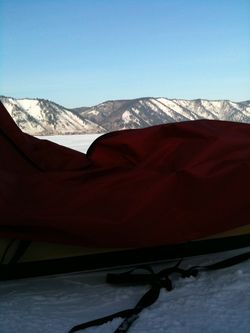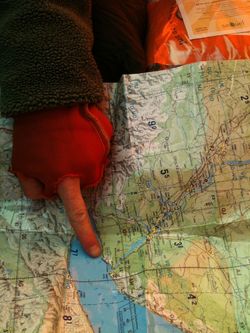
The last few days have been a flurry of activity as we have been organizing our gear and packing our sleds for our run across . An unsupported expedition like ours requires a meticulous eye for anticipating fuel expenditure, food rations, and gear for the journey. One miscalculation can easily mean the end of the expedition, so having the best equipment is critical. Here's our check list for essential polar expedition gear:
Bomb-proof outer wear: is a leading outfitter of arctic apparel, and we’re fortunate to have them as a partner in this expedition. From ultra-light 900-down jackets and pants that can squeeze down to the size of a soda can to burly windproof shells that can withstand the harshest conditions in Baikal, we're covered.
Sleds: Since we will drag all our gear behind us across Lake Baikal, it’s essential we have a sled that can withstand the hardships. Our were designed and built in Norway and are the sled of choice for renowned polar explorer . We elected to go with a mid-sized Kevlar body covered by a burly, water-resistant fabric with a full-length zipper down the middle. This allows us quick and easy access to all our equipment while providing protection from the elements. A double runner system on the base ensures the best glide possible.

Stove: A reliable stove is a must for any expedition. We’re going with the tried and true , which we’ve used on countless previous expeditions. It roars like a jet-engine but gets the job done quickly and without fuss.
Headlamp: With most expeditions, a great deal of the daily workis done in the dark. Be it setting up a tent, making food, or justgetting ready in the morning, having a durable, light-weight headlampis critical. There are a lot of excellent choices on the market butwe’ve settled on the very dependable .
Running shoes: We plan to run across Lake Baikal, so we've got to have our kicks on.

Thermos: A little heavy but a godsend for any cold-weather expedition. A cup of hot tea halfway through a cold day is worth the extra weight.
iPod: Our iPod Nanos are smaller than a credit card and store countless hours of music and audio. This secret indulgence is easy to carry, effortless to charge with our tiny Solio solar chargers, and good for lifting our spirits during the low points.
–Kevin Vallely and Ray Zahab
In March 2010, and will embark on the . They will run 65 to 70 kilometers per day across the frozen surface of ,which is 636 kilometers long–carrying all the food and gear for theentire trip. They'd like to finish in 10 to 12 days, which would be aworld record, according to Vallely. Why go through such trouble? Toraise awareness and funding for clean drinking water projects aroundthe world and inspire students through the . This is the third in a series of their dispatches for���ϳԹ��� Online.